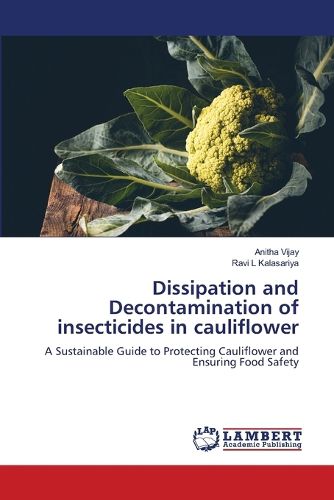Readings Newsletter
Become a Readings Member to make your shopping experience even easier.
Sign in or sign up for free!
You’re not far away from qualifying for FREE standard shipping within Australia
You’ve qualified for FREE standard shipping within Australia
The cart is loading…






This title is printed to order. This book may have been self-published. If so, we cannot guarantee the quality of the content. In the main most books will have gone through the editing process however some may not. We therefore suggest that you be aware of this before ordering this book. If in doubt check either the author or publisher’s details as we are unable to accept any returns unless they are faulty. Please contact us if you have any questions.
Cauliflower (Brassica oleracea var. botrytis) is an economically and nutritionally important vegetable crop grown worldwide. However, its production is severely threatened by the diamondback moth (Plutella xylostella L.), one of the most destructive pests of cruciferous crops. This highly adaptable and prolific pest causes significant yield losses by feeding on leaves and damaging curds, ultimately reducing market value. Effective management of the diamondback moth in cauliflower requires an integrated approach that combines insecticidal control with sustainable agricultural practices. In addition to suppressing pest populations, it is crucial to consider the dissipation and decontamination of insecticides to minimize environmental residues and ensure food safety. Strategies that enhance the breakdown of pesticide residues while maintaining efficacy can help safeguard beneficial organisms, promote ecological balance, and meet regulatory standards. This book explores innovative and sustainable pest control methods, emphasizing responsible insecticide use, residue management, and decontamination techniques to protect both crops and the environment.
$9.00 standard shipping within Australia
FREE standard shipping within Australia for orders over $100.00
Express & International shipping calculated at checkout
This title is printed to order. This book may have been self-published. If so, we cannot guarantee the quality of the content. In the main most books will have gone through the editing process however some may not. We therefore suggest that you be aware of this before ordering this book. If in doubt check either the author or publisher’s details as we are unable to accept any returns unless they are faulty. Please contact us if you have any questions.
Cauliflower (Brassica oleracea var. botrytis) is an economically and nutritionally important vegetable crop grown worldwide. However, its production is severely threatened by the diamondback moth (Plutella xylostella L.), one of the most destructive pests of cruciferous crops. This highly adaptable and prolific pest causes significant yield losses by feeding on leaves and damaging curds, ultimately reducing market value. Effective management of the diamondback moth in cauliflower requires an integrated approach that combines insecticidal control with sustainable agricultural practices. In addition to suppressing pest populations, it is crucial to consider the dissipation and decontamination of insecticides to minimize environmental residues and ensure food safety. Strategies that enhance the breakdown of pesticide residues while maintaining efficacy can help safeguard beneficial organisms, promote ecological balance, and meet regulatory standards. This book explores innovative and sustainable pest control methods, emphasizing responsible insecticide use, residue management, and decontamination techniques to protect both crops and the environment.